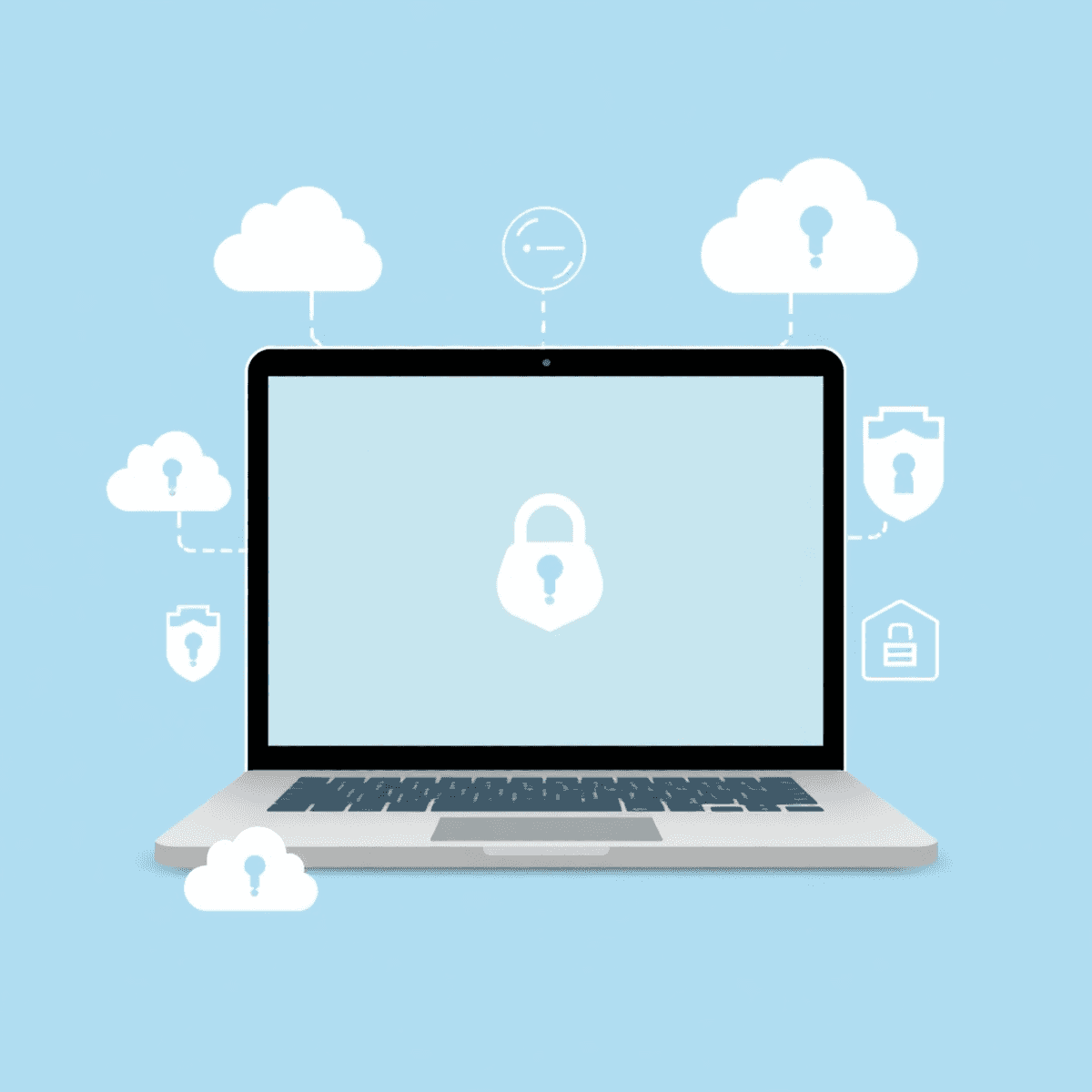Backups for your websites are not just a good practice—they are essential. Every website owner faces the risk of a site crash at some point, whether due to hacking, server failure, human error, or software conflicts. Without proper backups in place, these crashes can lead to irreversible data loss, downtime, and potentially severe damage to your online presence and business revenue.
Consider what happens when your website suddenly goes offline or important content disappears. You lose visitors, trust, and sales. Recovering without backups may mean starting from scratch. This is a risk no website owner should take lightly.
This guide will walk you through everything you need to know about creating reliable backups for websites. You will learn:
- Why backups are crucial for protecting your data
- How automatic backup plugins work and which ones stand out
- Best practices for securing your website against unauthorized access
- Additional layers of security such as two-factor authentication and security plugins
- When to perform manual backups before major changes
- A practical checklist to set up a comprehensive backup and security system
Taking control of your website’s safety with effective backup strategies helps prevent catastrophic losses and keeps your site running smoothly even after unexpected crashes.
Why Backups are Essential
Website protection relies on preventing data loss. There are various ways you can lose your website data: server failures, hacking attacks, accidental deletions, or software bugs. Each of these risks has the potential to wipe out valuable content, customer information, and critical settings.
The consequences of site crashes extend beyond technical inconvenience. For businesses, downtime translates to lost revenue, damaged reputation, and unhappy customers. Picture an online store going offline during a sale or a service provider’s booking system failing when clients need it the most. These situations emphasize the importance of continuous uptime for business operations.
Regular backups serve as a safety net by:
- Restoring your website quickly, minimizing downtime after crashes or attacks
- Preserving customer data and content, ensuring nothing important disappears
- Allowing safe experimentation with updates or new features without fear of permanent loss
- Reducing stress by having reliable recovery options ready
Making backups a part of your website maintenance routine strengthens your defense against unexpected events that could otherwise cause irreversible damage. This layer of protection supports every other security measure you put in place.
Creating Automatic Backups with Plugins
Automatic backups are an essential part of maintaining a website. They ensure that your data is always protected without you having to do anything manually. Two popular plugins known for their effectiveness in this area are UpdraftPlus and BlogVault.
How Automatic Backups Work
Automatic backups work by setting up a schedule to regularly back up your website’s files and databases without you needing to be involved. This automated process guarantees that even if you forget to back up your site manually, your data remains secure.
Comparing UpdraftPlus and BlogVault
Both UpdraftPlus and BlogVault offer unique features to make the backup process easier. Here’s a comparison of what each plugin brings to the table:
- UpdraftPlus: Known for its user-friendly interface and seamless integration with cloud storage services.
- BlogVault: Offers real-time backups and simple site restoration options.
The Importance of Off-Site Storage
It’s crucial to store backups off-site to avoid having a single point of failure. If your server crashes or gets hacked, having backups stored externally ensures that your data stays safe and can be easily restored.
By using these plugins for automatic backups and prioritizing off-site storage, you can create a strong backup system that protects your website from potential data loss and disruptions.
Securing Your Website Against Unauthorized Access
Protecting your website begins with using a strong password. Weak passwords are an open invitation to hackers who use automated tools to guess common or simple passwords. A strong password includes a mix of uppercase and lowercase letters, numbers, and special characters. Avoid predictable sequences or easily guessable information like birthdays or common words.
Changing the default username is another simple yet effective security step. Many platforms come with default usernames such as “admin,” which attackers target first during brute force login attempts. Creating a unique username makes it more difficult for unauthorized users to gain access.
Implement limit login attempts settings to reduce the risk of hacking. This restricts how many times someone can try to log in before being temporarily blocked or locked out. It prevents continuous guessing attacks and adds an additional barrier against unauthorized access.
These security practices work hand-in-hand with your backups for your websites. Even if an attacker manages to break in, having recent backups ensures you can restore your site quickly without losing critical data or functionality. Combine strong passwords, unique usernames, and login attempt limits for a solid defense against unauthorized access attempts.
Installing Security Plugins for Enhanced Protection
Security plugins are essential for protecting your website from potential threats and unauthorized access. Here are some popular security plugins that can improve the security of your site:
1. Wordfence
Wordfence is known for its strong firewall protection. It offers real-time monitoring of your website for malware, hacking attempts, and other security risks. With Wordfence, you will receive detailed security alerts and malicious traffic will be effectively blocked.
2. Sucuri
Sucuri is a comprehensive security solution for websites. It includes features such as malware scanning, blacklist monitoring, and security hardening. Sucuri helps in identifying weaknesses and protecting your site from cyber threats.
3. iThemes Security
iThemes Security provides various security measures like file integrity checks, brute force protection, and strong password enforcement. This plugin also sends immediate alerts for any suspicious activities on your site.
By installing these security plugins, you can enjoy the following benefits:
- Improved firewall protection to prevent harmful attacks.
- Regular malware scanning to find and eliminate any threats.
- Instant notifications for quick response to suspicious actions.
Use these trusted security plugins to protect your website and maintain a secure online presence.
Implementing Two-Factor Authentication for Extra Security Layer
Understanding Two-Factor Authentication (2FA)
Two-factor authentication (2FA) adds an extra layer of security beyond just a username and password. It requires a second piece of information to verify your identity, such as a code sent to your mobile device or generated by an app. This significantly reduces the risk of unauthorized access, even if someone obtains your login credentials.
Benefits of 2FA in Securing Your Website
Here are some key benefits of implementing 2FA to secure your website:
- Enhanced Protection: With 2FA, even if an attacker manages to steal your password, they would still need the second factor (such as a code or biometric verification) to gain access. This makes it much harder for unauthorized individuals to break into your accounts.
- Reduced Risk of Phishing Attacks: Phishing attacks often rely on tricking users into revealing their passwords. However, with 2FA in place, even if someone falls victim to a phishing attempt and unknowingly provides their password, the attacker would still be unable to log in without the second factor.
- Mitigated Impact of Data Breaches: In the unfortunate event of a data breach where user passwords are compromised, 2FA acts as an additional barrier. Attackers would need both the stolen password and the second factor to successfully log in, making it significantly more challenging for them to exploit the breach.
Adding an Extra Layer of Protection to Your Login Page
Implementing 2FA on your website’s login page ensures that only authorized users can access sensitive areas. This additional step deters hackers who may have acquired passwords through phishing or data breaches.
Ways to Implement 2FA on Your Login Page
Here are some common methods you can use to implement 2FA on your login page:
- SMS Verification: Send a unique verification code via SMS to the user’s registered mobile number during the login process. Users must enter this code along with their password to gain access.
- Authenticator Apps: Encourage users to download authenticator apps like Google Authenticator or Authy. These apps generate time-based one-time passwords (TOTPs) that users must enter during login.
- Biometric Authentication: If supported by user devices, consider incorporating biometric authentication methods such as fingerprint scans or facial recognition as part of the verification process.
By requiring a second form of verification, like a fingerprint scan or a unique code, you greatly enhance the security of your website and protect valuable data from potential threats.
Keeping Themes and Plugins Updated for Vulnerability Prevention
Importance of Regular Updates
Ensuring themes and plugins are updated is crucial to prevent security risks. Developers often release updates to patch vulnerabilities that hackers could exploit. By keeping your tools up-to-date, you strengthen your website’s defenses against potential threats.
Ensuring Tools Are Current
Check for updates regularly within your content management system (CMS). Most platforms provide notifications when new versions are available. Make it a habit to review and install these updates promptly to maintain the security of your website.
Benefit of Modern Warrior Sites Hosting
Consider hosting services like Modern Warrior Sites that offer the Plugin Auto Update feature. This functionality automates the process of updating plugins, reducing the risk of overlooking critical updates that could compromise your site’s security.
By prioritizing software updates and leveraging automated tools like Plugin Auto Update, you fortify your website against vulnerabilities and enhance its overall protection. Regular maintenance through updates is a proactive measure that safeguards your site from potential security breaches.
Manual Backups as Precautionary Measures for Major Changes
Before making significant updates or changes to your website, it is crucial to perform manual backups as a precautionary measure. This ensures that in case anything goes wrong during the update process, you can easily revert to a stable version of your site.
Why are Manual Backups Important?
Performing manual backups before making substantial modifications to your site acts as a safety net, safeguarding against any unforeseen consequences that may arise. It provides peace of mind knowing that you have a fallback option in place, ensuring the continuity and security of your website.
Benefits of Manual Backups
- Instant Recovery: Manual backups allow for instant recovery in case of errors or issues arising from major changes. By having a recent backup readily available, you can quickly restore your website to its previous state without facing prolonged downtime or loss of data.
- Control over Backup Process: Unlike automated backups, manual backups give you complete control over when and how backups are performed. This flexibility allows you to choose the most convenient times for backing up your site, minimizing disruption to your operations.
- Protection Against Human Error: While technology can sometimes fail, having manual backups serves as an additional layer of protection against human error. If an update is mistakenly applied or a critical file is accidentally deleted, you can rely on your manual backup to rectify the situation.
By implementing manual backups as part of your website management strategy, you can mitigate risks associated with major changes and ensure the long-term stability of your online presence.
Checklist for Backup and Security System Setup
Backup Plugin Installation Checklist
- Research and select a reliable backup plugin such as UpdraftPlus or BlogVault.
- Install the chosen plugin on your website’s backend.
- Configure the plugin settings to schedule regular backups of your website data.
- Verify that the backups are being stored securely either off-site or in a separate server.
Security Measures Checklist
- Strengthen your website’s security by implementing a robust password policy.
- Change the default username to a unique identifier to prevent easy access for hackers.
- Set up login attempt limits to block repeated unauthorized login attempts.
- Install a reputable security plugin like Sucuri or Wordfence to enhance protection against cyber threats.
- Regularly scan your website for malware and vulnerabilities using the security plugin’s features.
Web Hosting Services with Top-Notch Security Features
Consider opting for web hosting services that offer advanced security measures such as:
- SSL certificates for encrypted data transmission.
- Server-side firewalls to block malicious traffic.
- Regular security updates and patches to protect against emerging threats.
Choose Reliable Web Hosting with Top-Notch Security Features!
Ensure the safety of your website backups by selecting a trusted web hosting provider like Modern Warrior Sites Webhosting, known for its top-notch security features and reliable backup solutions.
By following these comprehensive checklists, you can establish a robust backup and security system for your website, safeguarding it against potential risks and ensuring seamless operations even in the face of cyber threats.




